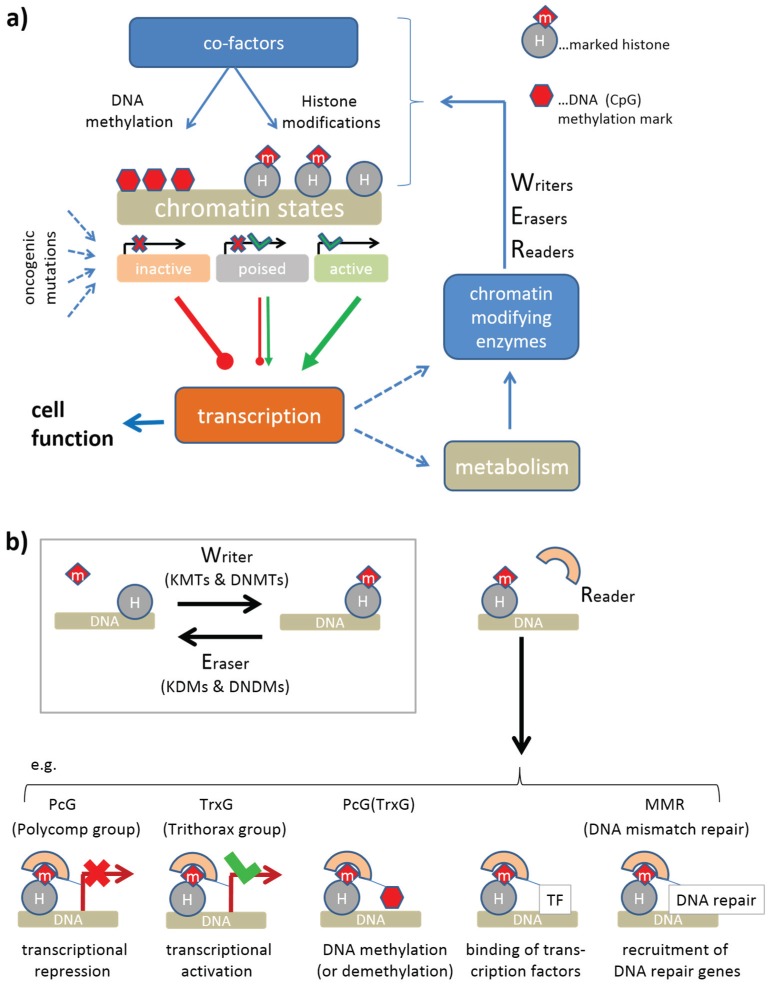Figure 1.
(a) Circuit of epigenetic regulation by chromatin modifiers: Different chromatin states are induced by a battery of histone modification, which in concert with DNA methylation, modulate transcription of the affected genes. The activity of the genes also affects the production (via transcription, translation and also posttranslational changes) of chromatin modifying enzymes, which, together with cofactors modulate the formation of different chromatin states. This feedback loop is further modulated by metabolites, which serve as cofactors. Oncogenic mutations can dis-balance this network giving rise to malignant cellular states. (b) Chromatin modifying enzymes comprise writers, erasers and readers of epigenetic marks at the histones and/or the DNA. Writers, such as histone (KMTs) or DNA methyltransferases (DNMTs), and erasers, such as histone (KDMs) or DNA demethylases (DNDMs), add or remove these marks, respectively. Readers recognize such marks and induce specific molecular “actions” (activation or repression of gene expression, writing or erasing of DNA or histone marks or recruitment of transcription factors or of DNA-repair genes).

